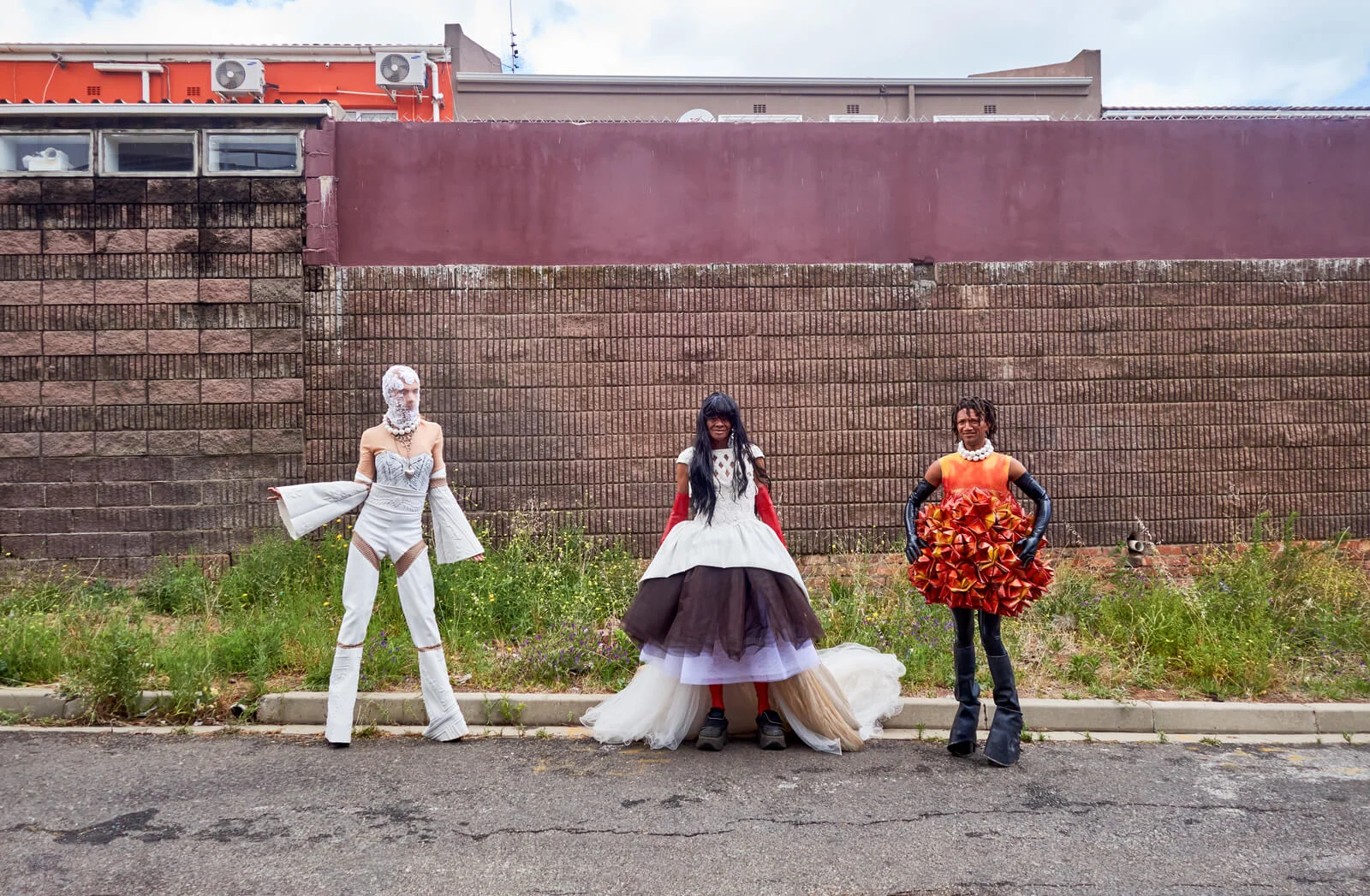
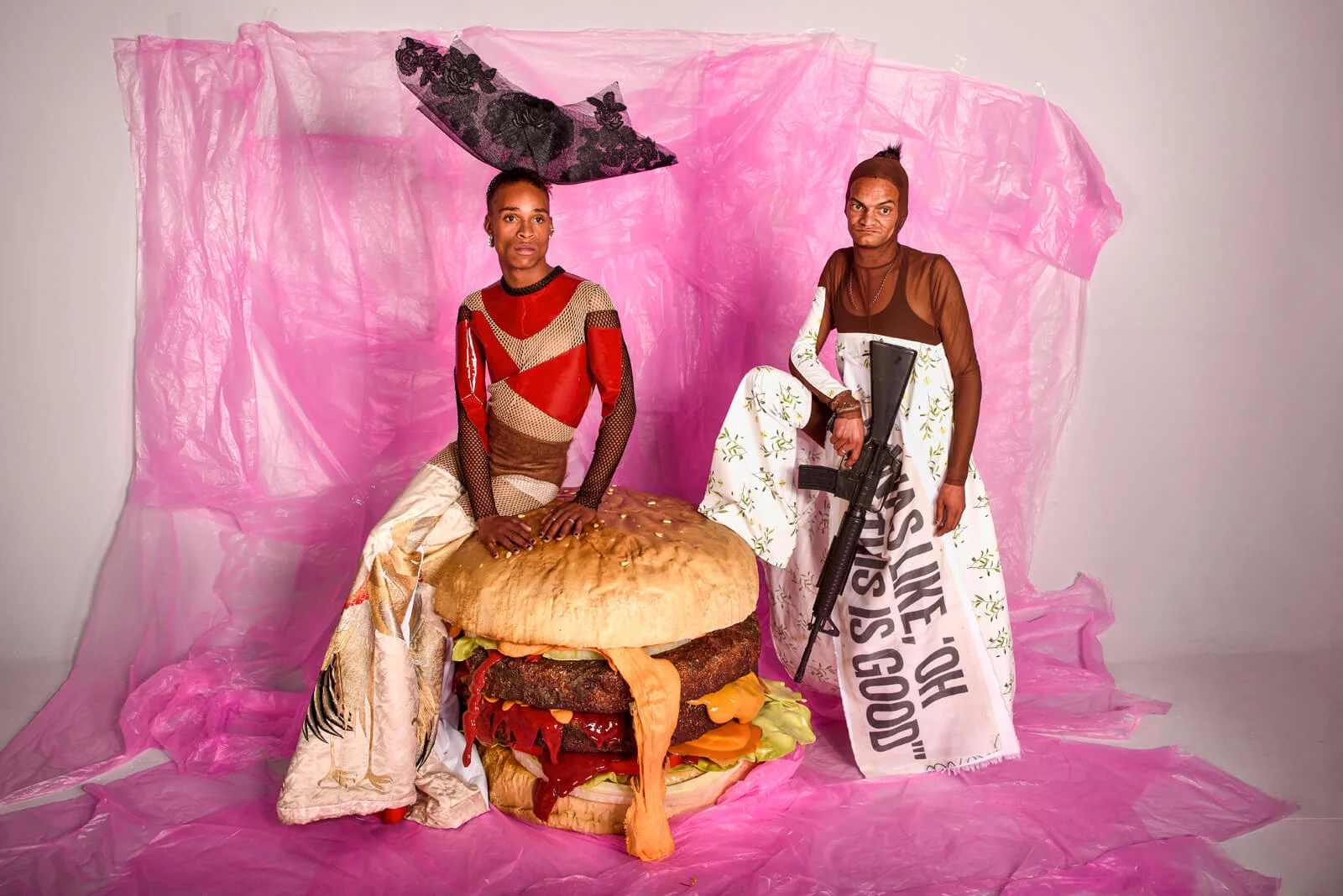
First coming to prominence as the designer behind the infamous 'vagina pants' in Janelle Monae's video for "PYNK", Duran Lantink has since established himself as the master of the fashion mash up. Writer Claire Marie Healy meets fashion's latest enigma to talk bootlegging, identity and why he's redefining the notion of branding.
To accurately illustrate the world of Dutch designer Duran Lantink, try a little at-home experiment. Download one image of a Duran design, then search Google with the JPEG. For instance, I inputted an image of one of Duran’s hybrid shoes, a Hermes, Dr Martens, Dries Van Noten, Nike and Gucci mash-up somewhere between an elegant snakeskin loafer, chunky Hypebeast sneaker and a spaceship.
Confusion reigns. Among the “visually similar images”, there are no matches with the original items, with the algorithm throwing up embellished Dolce & Gabbana heels, Houndstooth Louboutin wedges and iridescent Jeffrey Campbell boots. More than just a glitch in the Matrix, what Duran has created – as with all his garments – is something incomparable: an item totally different from the sum of its parts, where the ingredients with which it was glued together in the first place become something else entirely. These are creations that needle at the idea of branding: what is a brand, and why should it be treated as sacred, anyway?
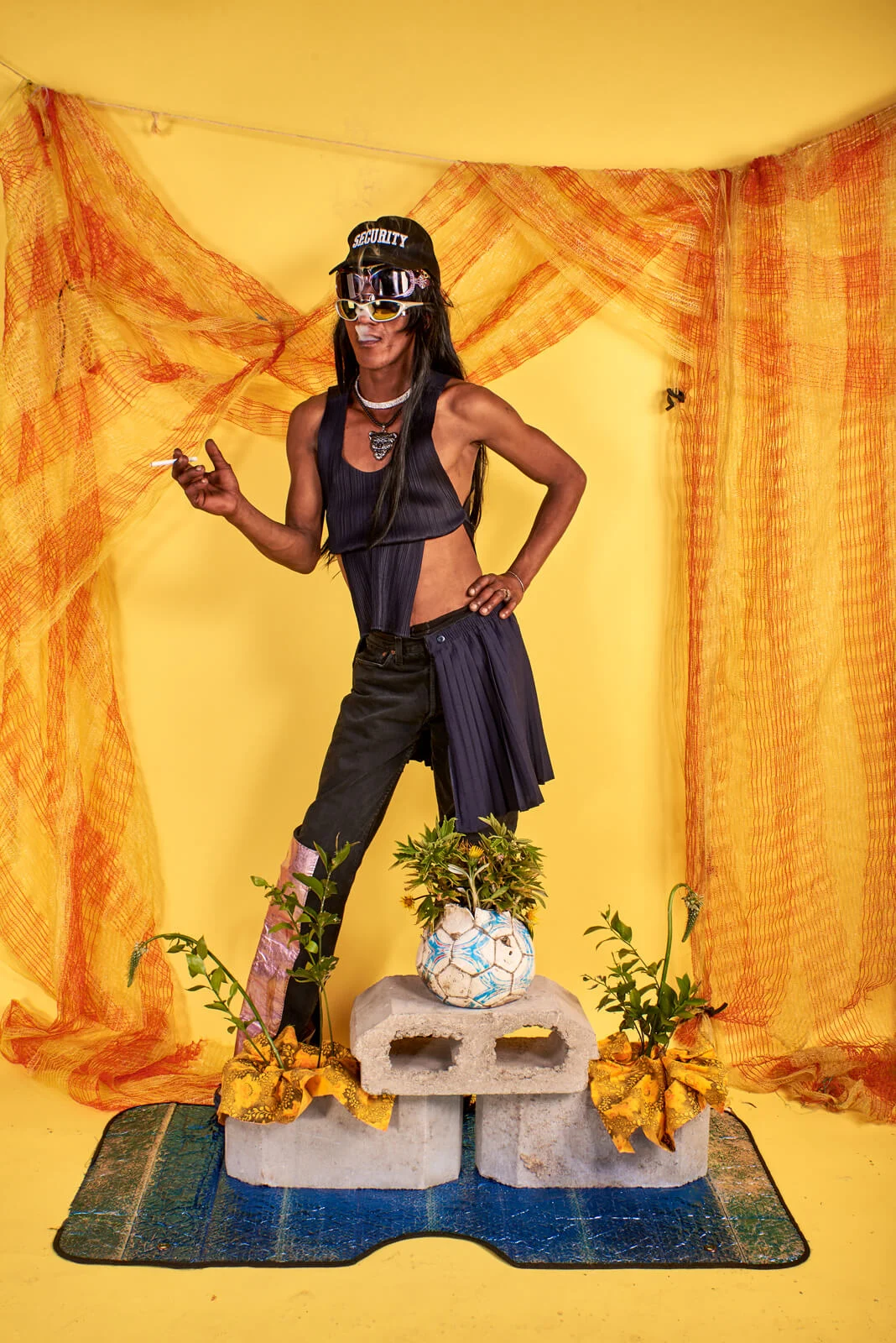
“I struggle with what to call it”, says Duran of what he does. “I say brand, but then I think, really?” I meet the designer in a cool back room of Somerset House on the kind of sweaty Thursday afternoon in London that takes you by surprise. It feels like a suitable spot for our interview, given that just this February Duran displayed his work here as part of the institution’s biannual International Fashion Showcase, which provides a residency and mentorship to global fashion talent. There, the designer created his unique cornershop, which displayed the “mash-up” designs he has become known for. From jackets to shoes to dresses, and even the humble shopping bag, Duran’s creations are an inspired, Technicolor amalgamation of other items, often from charity shops or increasingly, deadstock or donations from recognisable luxury designers.
We live in strange, heightened times for fashion and the idea of the copy. Copying anxiety is rife, with designers striving for authenticity even while they subsume bootleggers into their brand: internet favorite Ava Nirui, once known for her witty rip-offs of designer logos, is now creative director at Marc Jacobs; Dapper Dan, once arrested by the Feds for his beloved bootlegs of designers like Gucci, was “copied” by Allessandro Michele in 2017, only to be hitherto invited by Michele to open a new atelier in Harlem in the house’s name by 2019. Meanwhile, design-critics like @dietprada foster a call-out culture ready to publicly humiliate designer copycats faster than you can say ‘fair use’.
Into this confusing atmosphere emerges a designer like Duran. Just this year, the designer has hosted a pop-up at the 50M concept store in London, and been a curveball nomination for the LVMH prize. If all this has passed you by, you may remember that the infamous “Vagina Pants”, as worn by Janelle Monae on her PYNK album cover, were also Duran’s brainchild. But beyond labial looks, Duran is staking his claim as a bold objector to the waste produced by luxury brands.
In-person, Duran’s an unlikely iconoclast: punkish, but incandescently cheerful. To look at, he doesn’t instantly appear to rage against any machine, with a sweet pearl earring giving the impression of an impish Renaissance courtier. “I really didn’t feel like I fit in”, he says of his fashion studies, which took him to Amsterdam for a Fashion Design BA at the Gerrit Rietveld Academy, followed with the Master’s program Fashion Matters at the Sandberg Institute, which invited students to study the environmental, economic and political issues the fashion industry faces today. “It's just something where I really feel comfortable being on my own in a way.” Duran pursued his ‘mash-up’ technique from the beginning, making collages and pulling items from charity shops to create original designs. “To be honest, I hated patterns. Like I just hated it! And it didn't make any sense because there were so many gifts (out there), from charity shops. It's just so good to combine those things and make something new. I think I love fast results, in a way.” For his graduation collection, Duran combined old Dutch designer stock from charity shops, items from his “Mom’s closet” and towering, 3D printed shoes created from unused acrylic nails discarded from nail salons – “quite gross, sorry!”, he cackles.
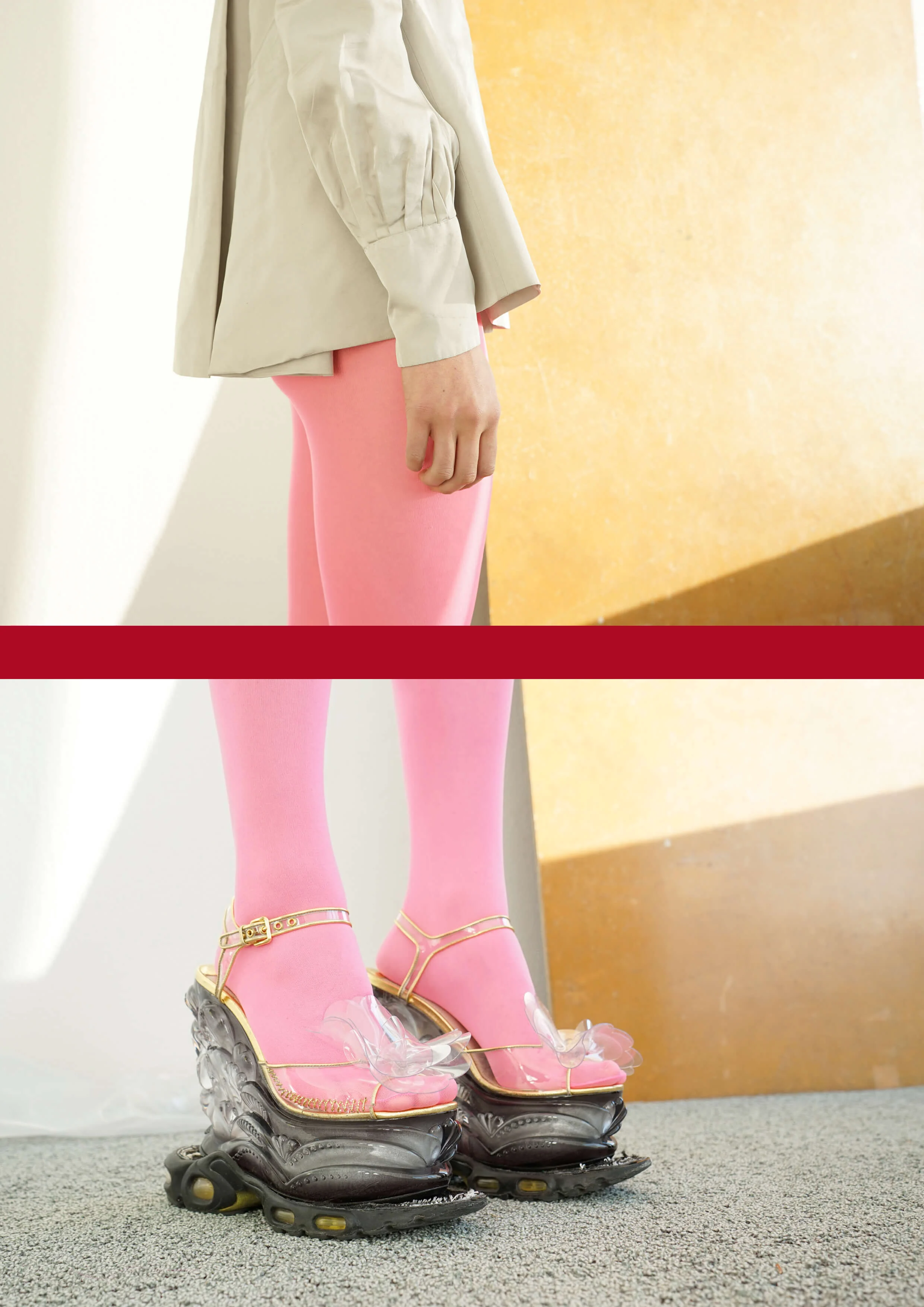
In the end it’s just about making as much money as possible for them.
In an era where luxury brands have been exposed for burning unsold stock rather than have its value decrease, and where even the new clothes we try on and return actually end up in landfill, any young designer has to face up to fashion’s sustainability problem. In the light of the current conversation, Duran’s approach feels radical – even if he admits it’s slightly accidental. “That's something I realised over time. It was never the idea to communicate about sustainability (in the beginning), it was just that I felt very sorry for those things that got leftover. It sort of always happens that I start doing something and then in the end, it becomes a bigger story!” For many years, Duran has been sourcing his stock by approaching smaller stores in his home country, stemming from his frustration around constant sales mania from larger or online stores, resulting in independent stores being priced out of the game. “The philosophy behind it was the smaller shops wouldn’t do sale anymore, they'll just create something completely new out of it, for full price again. So they have something that the bigger companies don't have.” But now he has the sustainability focus attached to his work, he says, his true dream of creating “the most harmful collection in two years won’t be possible now!” (he’s joking).
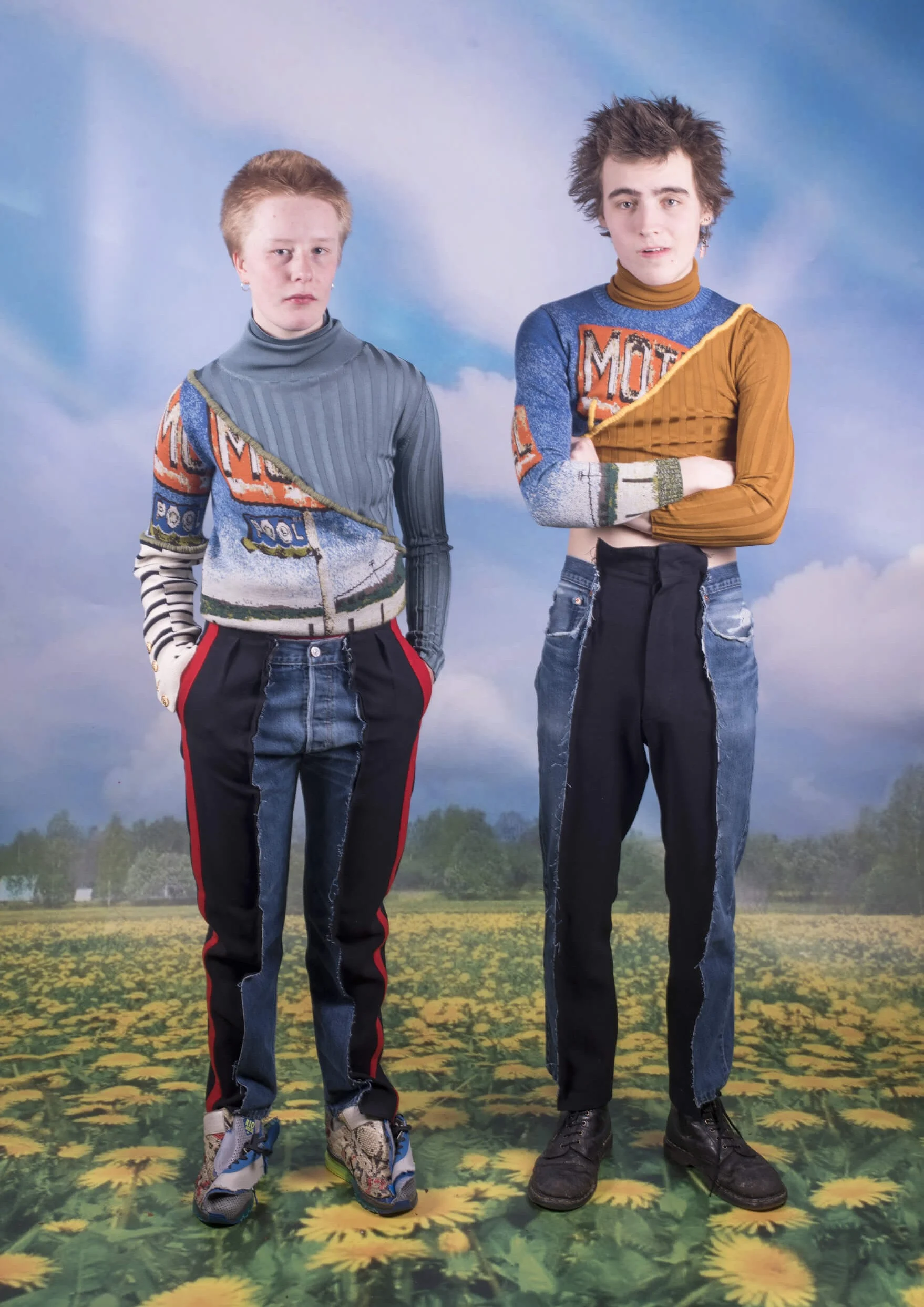

Despite his insistence that his process is instinctual, Duran is equally aware of the landscape his work finds itself in, in which bootlegging is a major cultural trend. In some way, it has to be the desirability of his garments that means he “hasn’t been arrested yet” – that, or the luxury conglomerates simply admire Duran’s barefacedness. As fascinated by the knock-offs as by the real thing, Duran is willing to dive into both worlds. “(Something like) Dapper Dan is a completely different story, of course, because it used to be really cool, but then it's also a bit dirty to pretend to be street, (and) that they're open for these new things, when in the end it's just about making as much money as possible and this weird marketing stunt. Because that is what it is.” For Duran, fashion’s current enamourment with ideas of copy-culture feels “like a present” from the big luxury groups – “because you have, like, so much to play with.” He cites one creation which combined a fake Louis Vuitton X Supreme bag with one of his mum’s own, real Louis Vuitton bags, as an experiment with ideas of value – one which, he laughs, will “probably (mean) Louis Vuitton doesn't want to work with me if this comes out!”
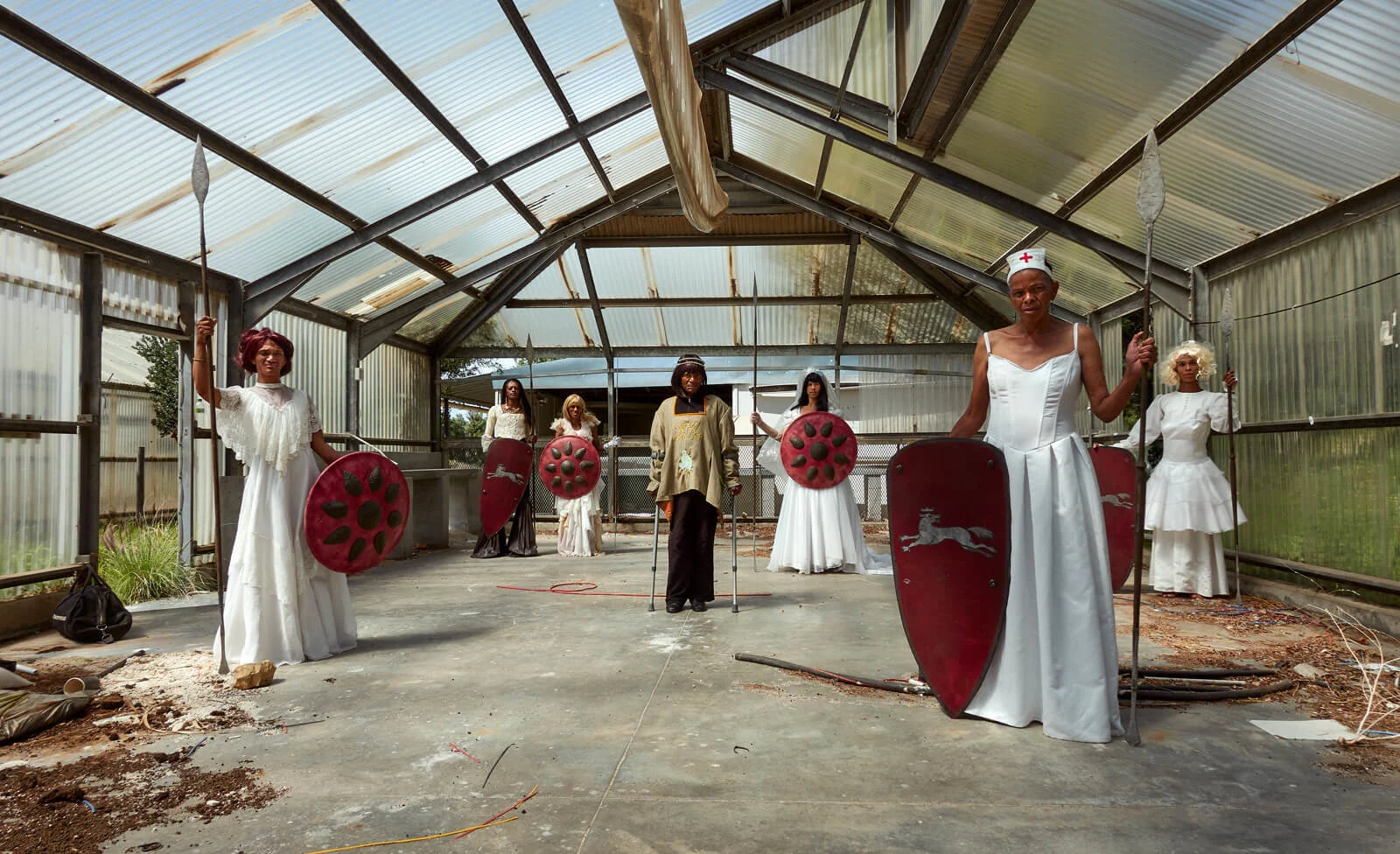
Duran cites his mum often in our conversation, and she seems to have been a big influence on his style, growing up together just the two of them in the Hague. “My mom had this particular group of friends, who were mostly queer people. My mom was always going to these parties where there were (lots of) drag queens, and my mom was in makeup and there was house music on all day.” It was in this heady environment that Duran grew to be hyper-conscious of what he was wearing, and interested in ideas of self-presentation as a tool for identity. “I used to wear dresses or skirts to school because it just felt very normal… Probably the fault of my mom!” he laughs.
Perhaps inspired by the community of queer women he was surrounded with growing up, Duran’s work remains intertwined with the platforming of marginalised communities – most particularly through his Sistaaz of the Castle project. The photo-project, an ongoing collaboration with photographer Jan Hoek and trans sex worker organisation SistaazHood begun in 2014, documents a community of South African, transgender sex workers living on the streets in Cape Town. SistaazHood is their self-organised safe space, where the women get HIV testing, medicine, and come together to talk about their experiences; otherwise, they are mostly resident under a bridge, which they have to move along from every two weeks as law enforcement come and clear the area. As Duran got to know the community better, he felt inspired to create a space for the women to not only feel safe, but to act out their personal fantasies. “We didn't want to go there and say, ‘Hey, thank you for the inspiration’, and then leave. So we thought okay, maybe we can create a collection together, and then next to that, we can ask you what your dreams are.”
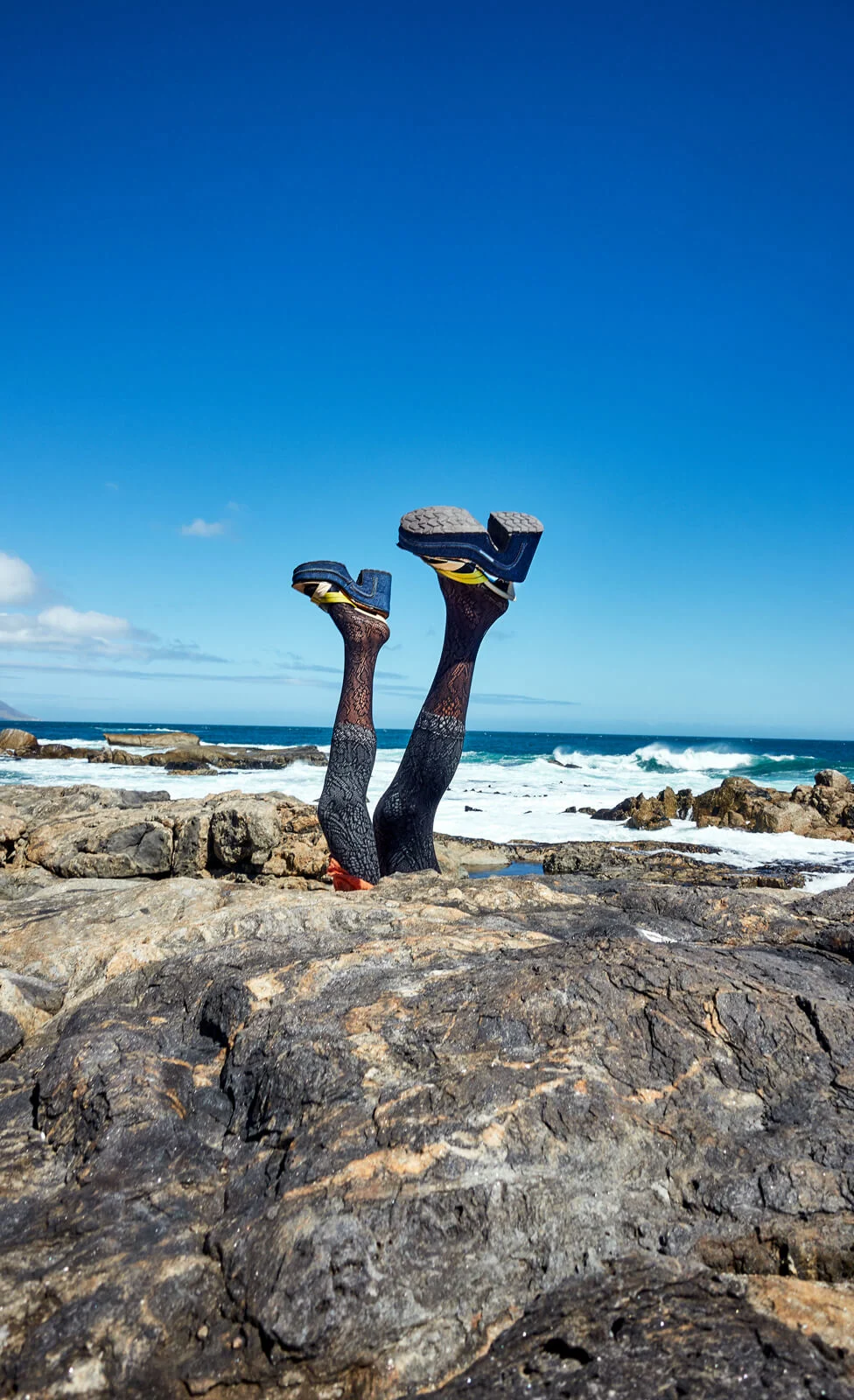
They want to have the stage to tell their story, so the world can see who they really are.
The resulting photos allow the women to completely dictate the shots and enact their dream scenarios: transforming into Celine Dion aboard the Titanic, a chick coming out of an egg, the Statue of Liberty (or, one better, the flames on the Statue of Liberty’s torch). When I offer that, for some, fashion can only ever be treated as separate from socially conscious projects of this nature – as it addresses pure desire, rather than the workers’ essential needs – Duran shakes his head. “I really struggle with people telling other people not to do something because it's not appropriate – it's for them to decide if it's appropriate or not. It's crazy. They're human beings. With this project, we share everything – every time we do a photoshoot, we pay them as real models.” Every time a photo is sold, 50% goes to the women – and then they get to decide what to do with it. “If you want to buy drugs with it. Fine. If you want to buy clothes with it, fine. if you want to buy food for your parents... It's your life. It's your money.”
“I don't know if it’s a fantasy, too, you know,” Duran continues of the photos, for which he is currently crowdfunding for a book and subsequent exhibition. “It's just a way of getting through life. They're a Princess, they're a Queen, they (always) create these storylines for themselves. They want to have the stage to tell their story, so the world can see who they really are.”
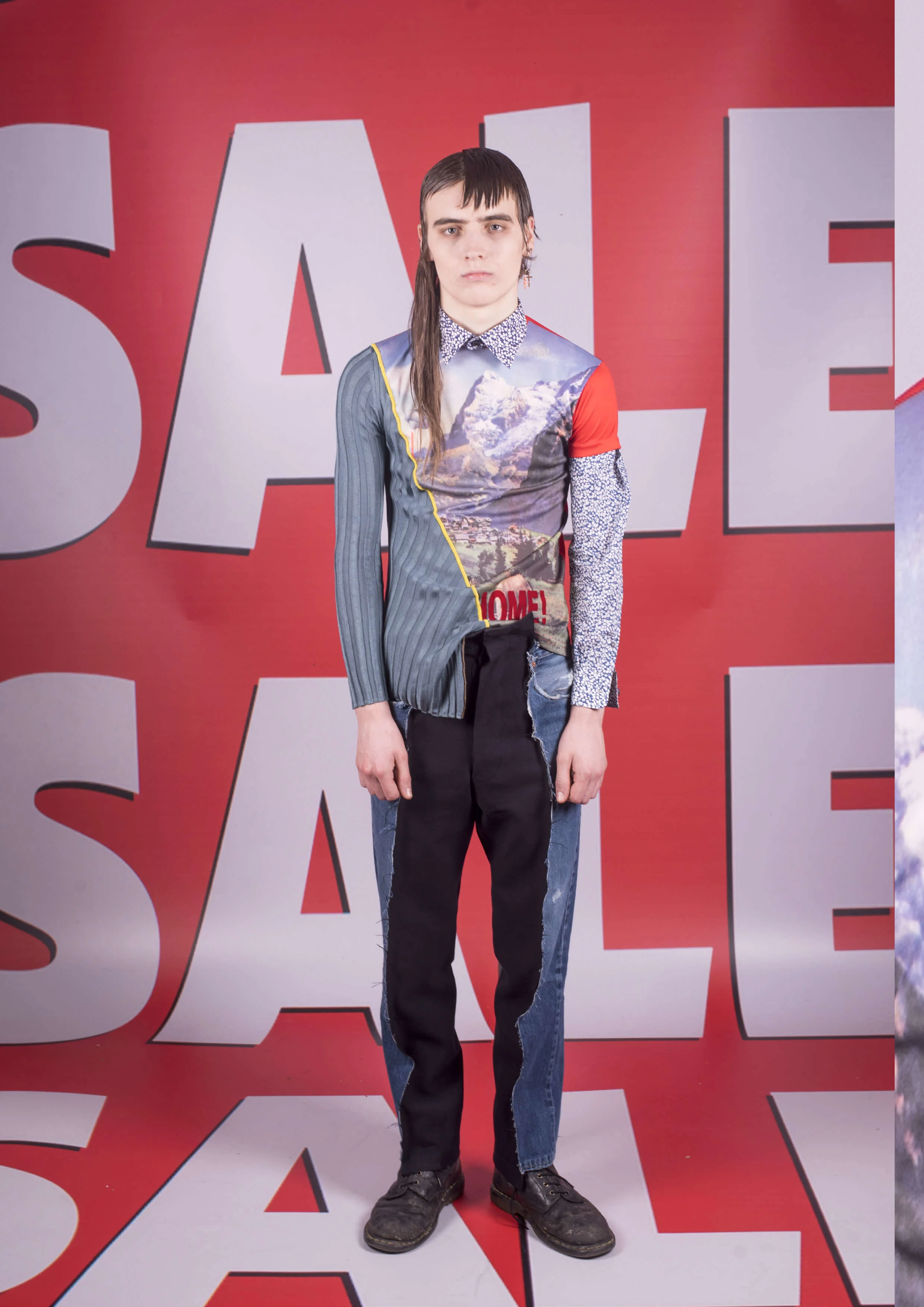
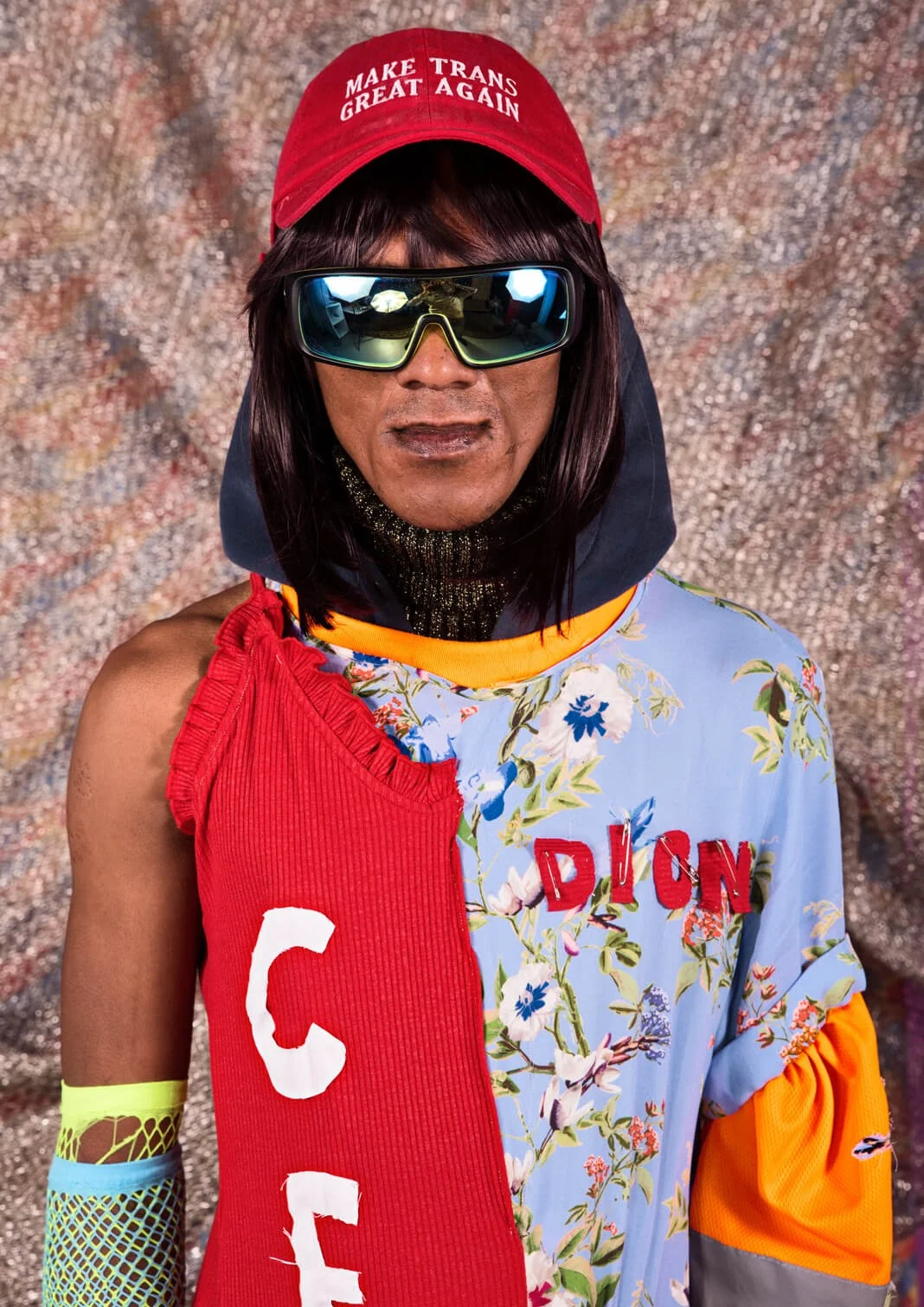
Between the sistaaz and the actual clothes, a social conscience is undeniably central to what Duran does. But can he maintain that and grow his brand-project-thing, while still keeping his essential Duran Lantink-ness intact? From speaking to him, it seems he might just surprise us by moving on totally from his current material obsessions: today, he cites a forthcoming project with Ari Versluis and Ellie Uyttenboek of Exactitudes involving hyperreal silicone faces that looks something akin to FaceSwap for fashion.
Duran has a shaman, he tells me, who told him something he found interesting recently. They told him he was a square, next to a circle. Just think of it as Duran’s spirit shape. “Most people live in a circle,” he smiles. “The moment I was born, I just decided to be a square next to the circle. That's something I really felt.” It’s a mental image that makes sense for a designer whose creations, though seemingly related to cycles of bootlegging, memes and endless cultural feedback loops, still feels one-of-a-kind.
Duran Lantink's work is currently on show at Centraal Museum.
